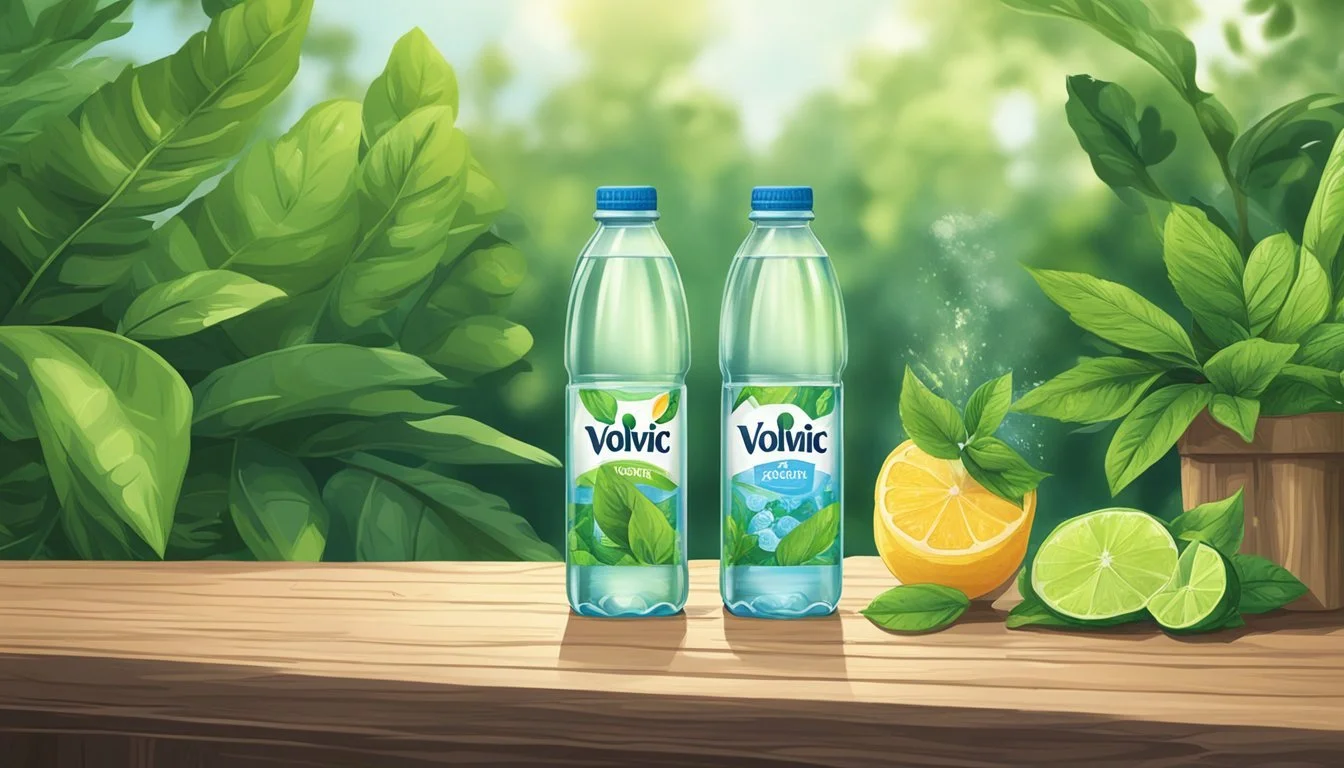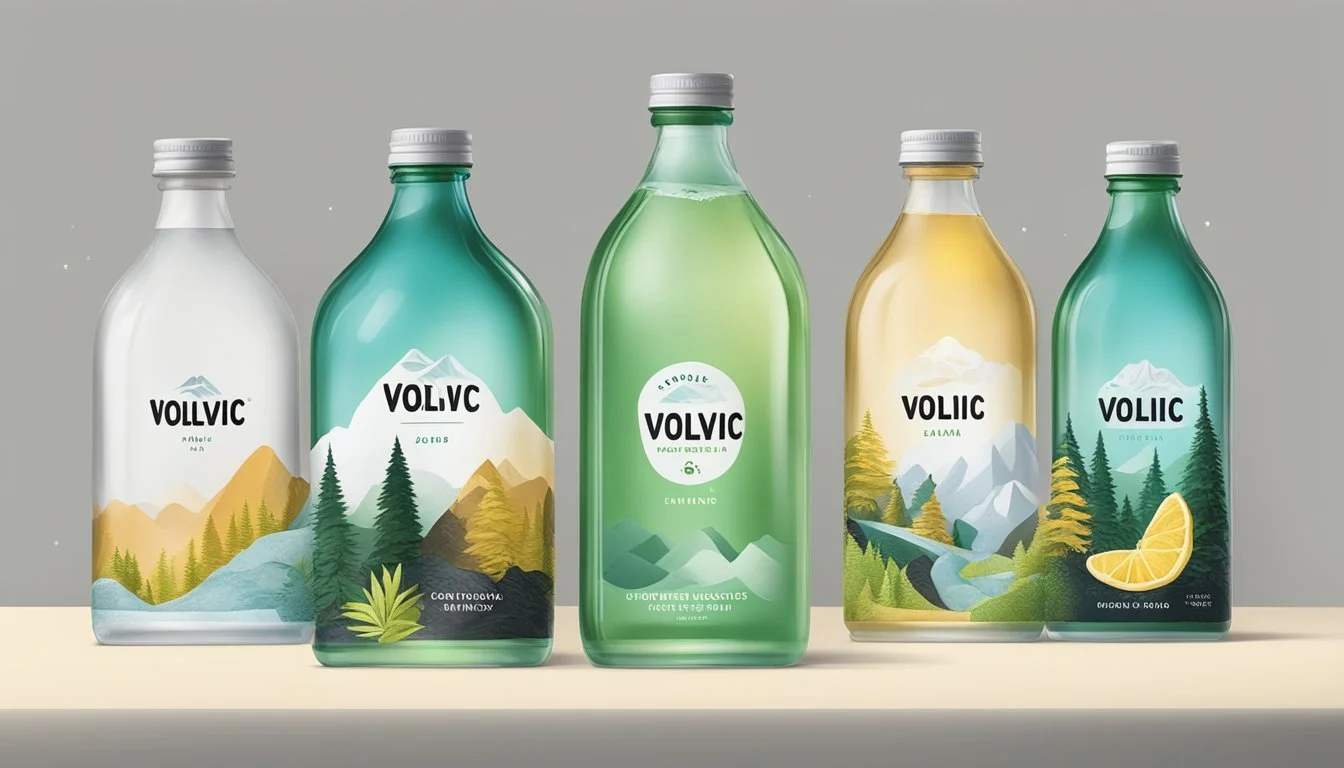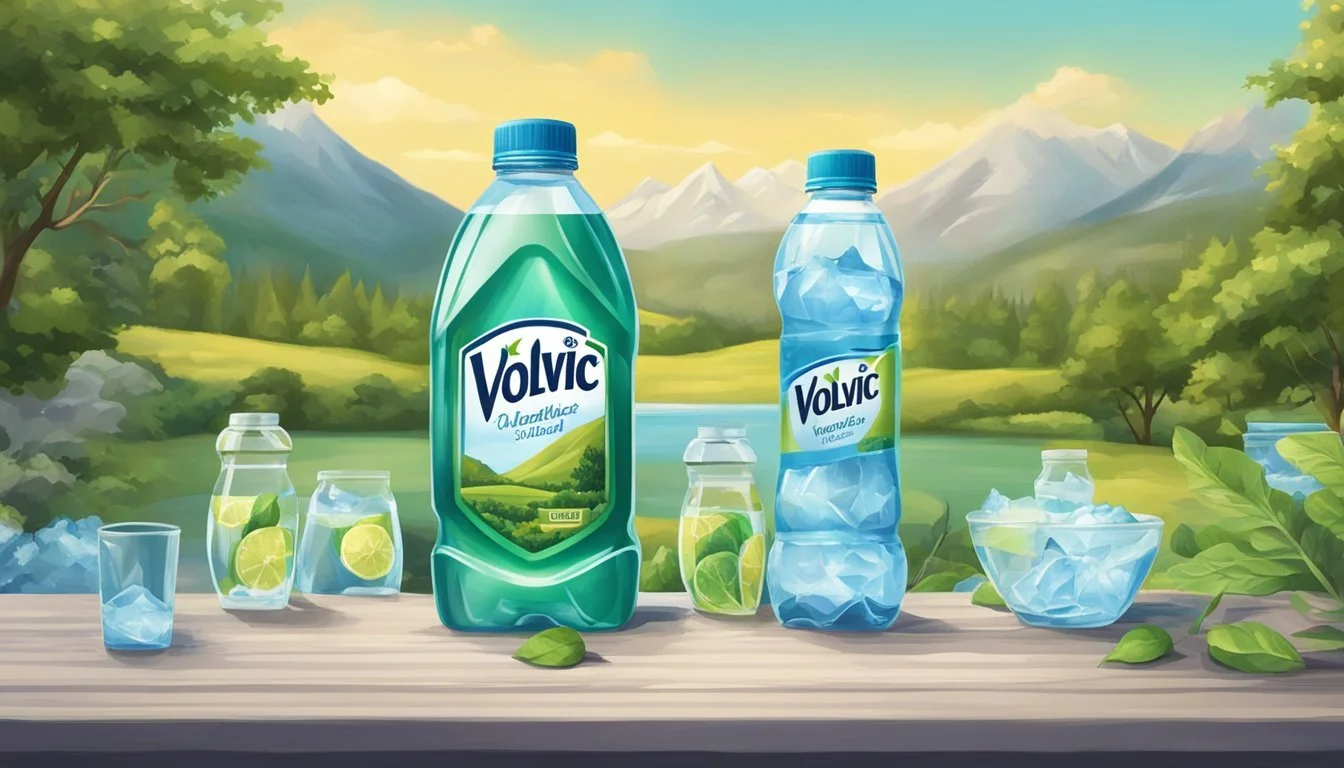Volvic vs. Liquid Death
An In-Depth Bottled Water Comparison
When it comes to bottled water, consumers often find themselves deciding between different brands. Among the many options available, Volvic and Liquid Death stand out for their unique qualities. Volvic, sourced from natural springs in France, offers purity and a high mineral content that appeals to many health-conscious individuals.
On the other hand, Liquid Death, with its edgy branding and Austrian Alps source, appeals to a younger, more eco-conscious demographic. Its tall aluminum cans and the promise to "murder your thirst" add a distinctive touch to the experience. For those who prioritize eco-friendliness and a unique drinking experience, Liquid Death might be the better choice.
Comparatively, Volvic's smooth taste and balanced mineral profile make it a solid option for those looking for a straightforward hydration solution. The choice between Volvic and Liquid Death ultimately comes down to personal preferences regarding taste, brand image, and environmental impact.
Overview of Bottled Water
Bottled water has become a staple in the beverage industry, known for its convenience and perceived purity. Its history and market comparison with tap water reveal important insights into consumer preferences and implications.
History and Popularity
The commercial sale of bottled water began in the 19th century in the United States, with brands like Saratoga Springs selling mineral water. In recent years, the popularity skyrocketed due to growing health consciousness and convenience factors. Well-known brands like Evian, Fiji, and Dasani dominate the market alongside newer entrants such as Liquid Death.
Marketing plays a critical role in bottled water's popularity. The use of terms like "purified," "spring," and "mineral" influences consumer choice. Innovations in packaging, such as eco-friendly bottles and resealable caps, also contribute to its widespread acceptance.
Bottled Water vs. Tap Water
The debate between bottled and tap water hinges on several factors, including perceived safety, taste, and convenience. Bottled water is often marketed as cleaner or safer than tap water. However, tap water in many states is subjected to stringent regulations and standards ensuring its safety.
Taste preference is another significant aspect. Some people find bottled water more appealing due to its mineral content or purification process. Convenience also plays a pivotal role, with bottled water being readily available in various locations.
Despite the benefits, environmental concerns about plastic waste from bottled water are rising. Comparatively, tap water is more economical and sustainable, reducing plastic use and carbon footprint.
Understanding Water Quality
Understanding the quality of bottled water involves examining its pH balance, mineral content, total dissolved solids (TDS), and potential contaminants. These factors directly impact hydration levels, health benefits, and overall safety.
PH Balance and Health
The pH level of water determines its acidity or alkalinity, which can range from 0 (highly acidic) to 14 (highly alkaline).
Volvic: Has a slightly alkaline pH of around 7.0 to 7.5. This is considered beneficial as it helps maintain the body's pH balance.
Liquid Death: Also slightly alkaline, aligning with similar health benefits.
Water with a higher pH level may improve hydration and reduce acid reflux symptoms. While the recommended pH for drinking water is close to 7, slight variations are often deemed acceptable and can offer different health advantages.
Mineral Content and Benefits
Mineral content is crucial as it contributes to both the flavor and health benefits of bottled water.
Calcium: Essential for bone health and found in varying levels in both Volvic and Liquid Death.
Magnesium: Important for muscle function, available in small quantities in these waters.
Potassium: A key electrolyte for hydration, also present to some degree.
Volvic boasts natural volcanic filtration, which imparts a distinct mineral profile. Liquid Death, sourced from the Alps, offers clean and crisp hydration, highlighting its mineral content as part of its appeal.
Total Dissolved Solids (TDS)
Total Dissolved Solids (TDS) measure the combined content of all inorganic and organic substances in water, affecting taste and quality.
Volvic: Known for its low to moderate TDS levels, resulting in a refreshing and light taste.
Liquid Death: Also maintains a moderate TDS level, contributing to its pure and clean feel.
TDS levels impact consumer preference; some prefer higher TDS for a fuller taste, while others opt for lower TDS for a more subtle flavor.
Contaminants and Safety
Safety and purity are paramount, with contaminants like lead being a concern.
Volvic ensures rigorous testing to maintain safety and purity, leveraging natural filtration to prevent contamination.
Liquid Death emphasizes eco-friendly packaging and stringent quality controls to eliminate harmful substances.
Consumer Reports highlight concerns over toxic PFAS chemicals in some brands, but both Volvic and Liquid Death have robust safeguards to ensure their products remain free from such contaminants, enhancing consumer trust.
Comparative Analysis: Volvic vs. Liquid Death
Volvic and Liquid Death are two prominent bottled water brands with distinct characteristics. This analysis compares their source and natural filtration, pH levels and alkalinity, mineral profile, packaging and sustainability, and taste and consumer perception.
Source and Natural Filtration
Volvic is sourced from the volcanic region of the Auvergne in France. This region's volcanic rocks naturally filter the water, which is often promoted as a unique selling point. The filtration process can take several years, enhancing its purity and mineral content.
Liquid Death, on the other hand, gets its water from the Austrian Alps. This mountain spring water undergoes natural filtration through layers of rock, which preserves its purity. Both sources are prized for their natural filtration processes, ensuring that consumers receive high-quality spring water.
PH Levels and Alkalinity
Volvic has a neutral to slightly acidic pH level, typically around 7.0 to 7.5. This makes it suitable for those who prefer water that closely matches the body's natural pH level, maintaining overall balance.
Liquid Death boasts a similar pH level, generally ranging from 7.5 to 8.2. This falls within the alkaline water category, which some believe provides additional health benefits, such as improved hydration and enhanced detoxification. Both brands cater to various pH preferences, making them versatile choices for different consumer needs.
Mineral Profile
Volvic is known for its balanced mineral content. It contains calcium, magnesium, and other essential minerals. The typical mineral profile for Volvic includes approximately 12 mg/L of calcium and 8 mg/L of magnesium, contributing to its mild taste.
Liquid Death also has a notable mineral profile, filtered naturally from the Austrian Alps. It contains a mix of minerals like calcium and magnesium, though specific concentrations may vary. This natural composition appeals to those looking for water that offers more than just hydration.
Packaging and Sustainability
Volvic predominantly uses plastic bottles, which they have been working to make more sustainable through increased use of recycled materials. Despite these efforts, the reliance on plastic remains a concern for eco-conscious consumers.
Liquid Death distinguishes itself with its aluminum cans, which contain about 70% recycled material. Aluminum is widely regarded as more sustainable than plastic due to its higher recyclability rate. This difference positions Liquid Death as a more environmentally-friendly option, resonating with consumers who prioritize sustainability.
Taste and Consumer Perception
Volvic's taste is often described as smooth and light, largely due to its balanced mineral content and natural filtration process. Consumers appreciate its subtle flavor, making it a popular choice for everyday hydration.
Liquid Death emphasizes a bold and refreshing taste. Marketing campaigns highlight its rock-and-roll branding, appealing to a younger, edgier demographic. Consumers often find its taste clean and crisp, enhanced by the mountain spring source and the aluminum can packaging, which can influence the water's perceived freshness.
Profiles of Notable Brands
This article examines the distinct characteristics of well-known bottled water brands, focusing on their sources, mineral content, and hydration benefits. The brands include Evian, Fiji Water, and Essentia, which have different origins and unique properties.
Evian: Sourced from the French Alps
Evian water is sourced from natural springs in the French Alps. The water goes through a 15-year natural filtration process through glacial sand, resulting in a distinctive mineral composition. Calcium, magnesium, and potassium are among the key minerals present.
Evian's pH level is typically around 7.2, making it close to neutral. The water is often praised for its smooth taste and high purity. With its easy availability worldwide, it remains a popular choice among consumers seeking reliable and consistent hydration.
Fiji Water: Tropical Rainwater Collection
Fiji Water is collected from an underground aquifer in Viti Levu, Fiji. The tropical rainwater is naturally filtered through volcanic rock, adding silica and other minerals. This process results in a slightly alkaline pH of around 7.7, which some health advocates believe offers better hydration.
The presence of electrolytes like magnesium and calcium adds to its appeal. Fiji Water’s distinctively soft, smooth taste and unique bottle design contribute to its premium market position. It’s often regarded as a luxury brand in the bottled water market.
Essentia: Ionized Alkaline Water
Essentia Water differentiates itself through a process that ionizes water, creating an alkaline pH of 9.5 or higher. This high pH level is achieved by infusing a proprietary blend of electrolytes, including calcium, magnesium, and potassium.
Advocates claim that alkaline water helps in better hydration and balances the body’s acidity. The ionization process also removes impurities, resulting in water with high purity. Essentia has built a solid reputation for those seeking functional benefits in hydration beyond just quenching thirst.
Environmental and Health Considerations
Choosing between Volvic and Liquid Death involves examining their environmental impact and health benefits. Packaging materials, hydration benefits, and purification processes are key factors.
Impact of Plastic Bottles
Volvic uses plastic bottles, which contribute significantly to environmental issues. Plastic production releases harmful emissions, and many plastic bottles end up in landfills or oceans, increasing the carbon footprint.
Liquid Death, on the other hand, uses recyclable aluminum cans. Aluminum is easier to recycle and produces less waste. This option is considered more eco-friendly and aligns with consumer preferences for sustainable packaging.
Benefits of Minerals and Hydration
Volvic water is sourced from natural springs and is rich in minerals like calcium, magnesium, and potassium. These minerals are essential for bone health and maintaining proper electrolyte balance, making Volvic beneficial for regular hydration.
Liquid Death focuses on providing clean, pure water free from additives. While it may lack the mineral content found in Volvic, it ensures hydration without any potentially harmful substances, which can be appealing to those concerned about water purity.
Water Purity and Purification Processes
Volvic undergoes minimal filtration to preserve its natural mineral content. This process retains beneficial minerals, making the water suitable for those looking to enhance their daily nutrient intake.
Liquid Death employs reverse osmosis to purify its water. This process removes impurities and contaminants, resulting in very pure water. While it may not have the same minerals as Volvic, it provides a high level of purity that can be appealing to those prioritizing clean, pure hydration.
Choosing between these two brands depends on individual preferences for environmental impact, mineral content, and purity.
Consumer Guide: How To Choose Bottled Water
Selecting bottled water involves assessing product labels, certifications, and price to find a balance of quality, safety, and value. Key factors include the water's pH level, mineral content, and source.
Analyzing Product Labels
Examining product labels helps consumers determine water quality and safety. Labels typically provide information about the water source, such as springs or wells, and purification methods, like distillation or reverse osmosis.
Checking the pH level is also essential. A neutral pH of 7 is often preferred, though some opt for slightly alkaline water (pH above 7) for purported health benefits. Also, look for disclosed mineral content, as minerals like calcium and magnesium can enhance taste and provide health benefits.
Additionally, consumers should watch for any added ingredients like electrolytes or flavors. These can affect both the health benefits and taste of the water.
Understanding Water Certifications
Certifications ensure bottled water meets safety and quality standards. Look for seals from reputable organizations such as the FDA, or international bodies like ISO.
FDA certification ensures the product complies with U.S. federal safety standards. The ISO certification indicates adherence to international quality management systems.
It's also helpful to look for environmental certifications. Certifications from organizations like the Rainforest Alliance or Carbon Trust indicate the brand's commitment to sustainability.
Certified natural or mineral waters, as regulated by specific standards, might offer additional benefits such as higher mineral content. These certifications provide assurance that the bottled water is both safe to consume and environmentally responsible.
Price Comparison and Value
Balancing cost and quality is crucial when selecting bottled water. While high-end brands often boast superior quality and unique mineral compositions, many affordable options offer similar health benefits.
Consumers should compare prices per liter rather than per bottle, as bottle sizes can vary. Look for bulk purchasing options to save money without compromising on quality.
Value isn't solely about price. Consider the benefits each brand offers. For instance, some might provide added electrolytes or enhanced mineral content, which can justify a higher price. Analyzing cost alongside specific benefits can help consumers make informed decisions.
By thoroughly evaluating labels, certifications, and prices, individuals can choose bottled water that best meets their needs for quality, safety, and cost-effectiveness.
Conclusion
Both Volvic and Liquid Death provide distinct offerings in the bottled water market, each with unique qualities that cater to different preferences and needs.
Volvic is sourced from the volcanic region of Auvergne, France, known for its mineral-rich composition. This water is naturally filtered through six layers of volcanic rock, giving it a unique taste profile and mineral content that appeals to those seeking pure and naturally sourced hydration.
Liquid Death, on the other hand, is sourced from the Austrian Alps and comes in eye-catching tallboy aluminum cans. The brand markets itself with a bold, edgy design and message, aiming to appeal to a younger, environmentally conscious demographic looking for both hydration and a statement.
Key Differences:
Source:
Volvic: Volcanic region of Auvergne, France
Liquid Death: Austrian Alps
Packaging:
Volvic: Traditional plastic bottles
Liquid Death: Aluminum cans
Taste & Mineral Content:
Volvic: Naturally filtered through volcanic rock
Liquid Death: Alpine water with a clean, crisp taste
Consumer Considerations:
Environmental Impact:
Aluminum cans used by Liquid Death are recyclable and contribute to a lesser environmental footprint compared to plastic bottles.
Target Demographic:
Volvic tends to attract consumers focused on natural purity and taste.
Liquid Death appeals to those who align with its rebellious and eco-friendly branding.
Choosing between Volvic and Liquid Death boils down to personal preference regarding source, packaging, taste, and brand identity.
More About Volvic
Mountain Valley Spring Water vs Volvic: Which Bottled Water is Better?
Volvic vs Kirkland Signature: Which Bottled Water is Better?
Volvic vs Richard's Rainwater: Which Bottled Water is Better?
Volvic vs Whole Foods Italian Still Mineral water: Which Bottled Water is Better?
More About Liquid Death
Aqua Carpatica vs Liquid Death: Which Bottled Water is Better?
Core Hydration vs Liquid Death: Which Bottled Water is Better?
Hawaii Volcanic vs Liquid Death: Which Bottled Water is Better?
Hawaiian Springs vs Liquid Death: Which Bottled Water is Better?
Ice Mountain vs Liquid Death: Which Bottled Water is Better?
Icelandic Glacial vs Liquid Death: Which Bottled Water is Better?
Liquid Death vs Cascade Mountain: Which Bottled Water is Better?
Liquid Death vs Crystal Geyser: Which Bottled Water is Better?
Liquid Death vs Crystal Lake: Which Bottled Water is Better?
Liquid Death vs Essence pH10: Which Bottled Water is Better?
Liquid Death vs Kirkland Signature: Which Bottled Water is Better?
Liquid Death vs Proud Source: Which Bottled Water is Better?
Liquid Death vs Richard's Rainwater: Which Bottled Water is Better?
Liquid Death vs Simple Truth: Which Bottled Water is Better?
Liquid Death vs Talking Rain AQA: Which Bottled Water is Better?
Liquid Death vs Whole Foods 365: Which Bottled Water is Better?
Liquid Death vs Whole Foods Italian Still Mineral water: Which Bottled Water is Better?
Mountain Valley Spring Water vs Liquid Death: Which Bottled Water is Better?
Nestle Pure Life vs Liquid Death: Which Bottled Water is Better?
Poland Spring vs Liquid Death: Which Bottled Water is Better?
Purely Sedona vs Liquid Death: Which Bottled Water is Better?
San Pellegrino vs Liquid Death: Which Bottled Water is Better?
Solan de Cabras vs Liquid Death: Which Bottled Water is Better?







